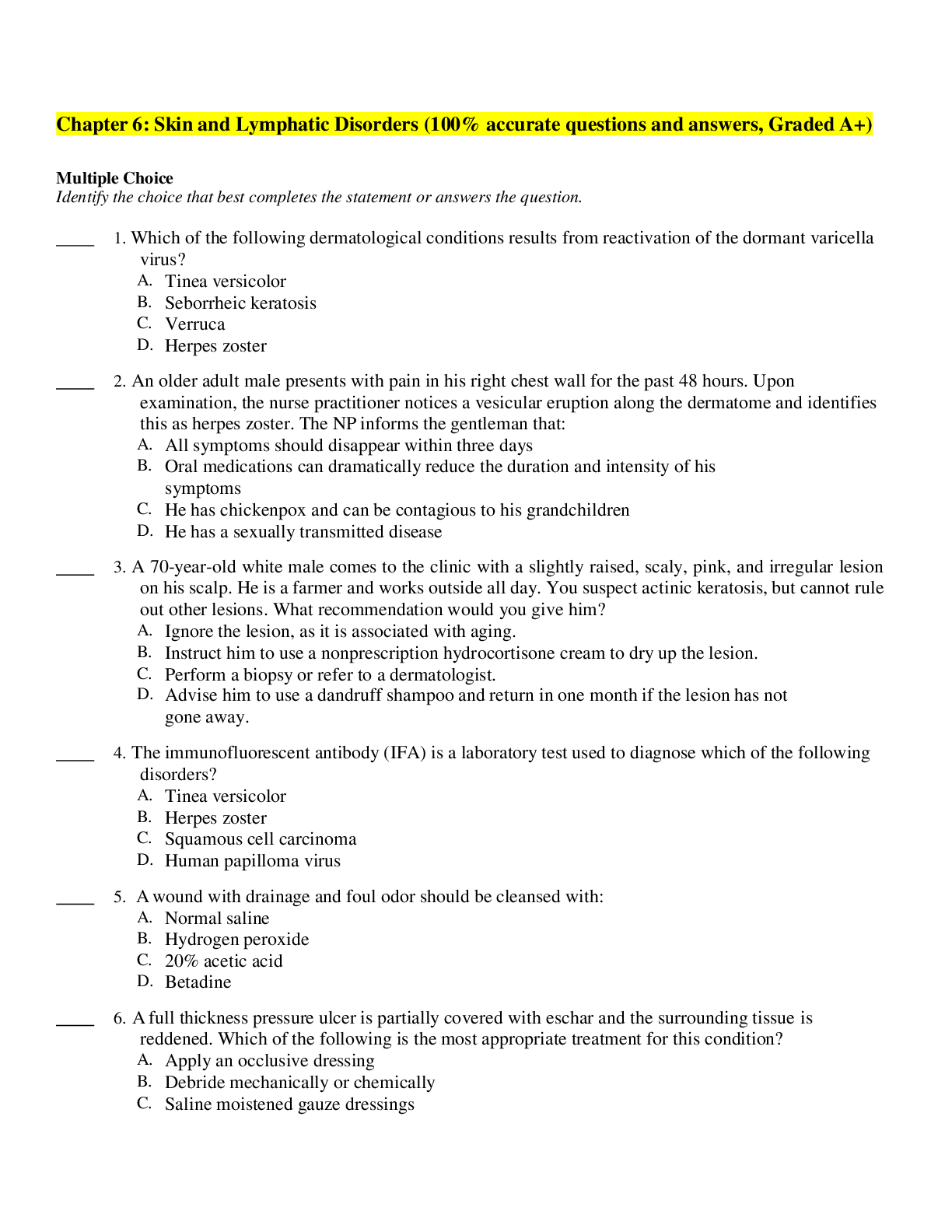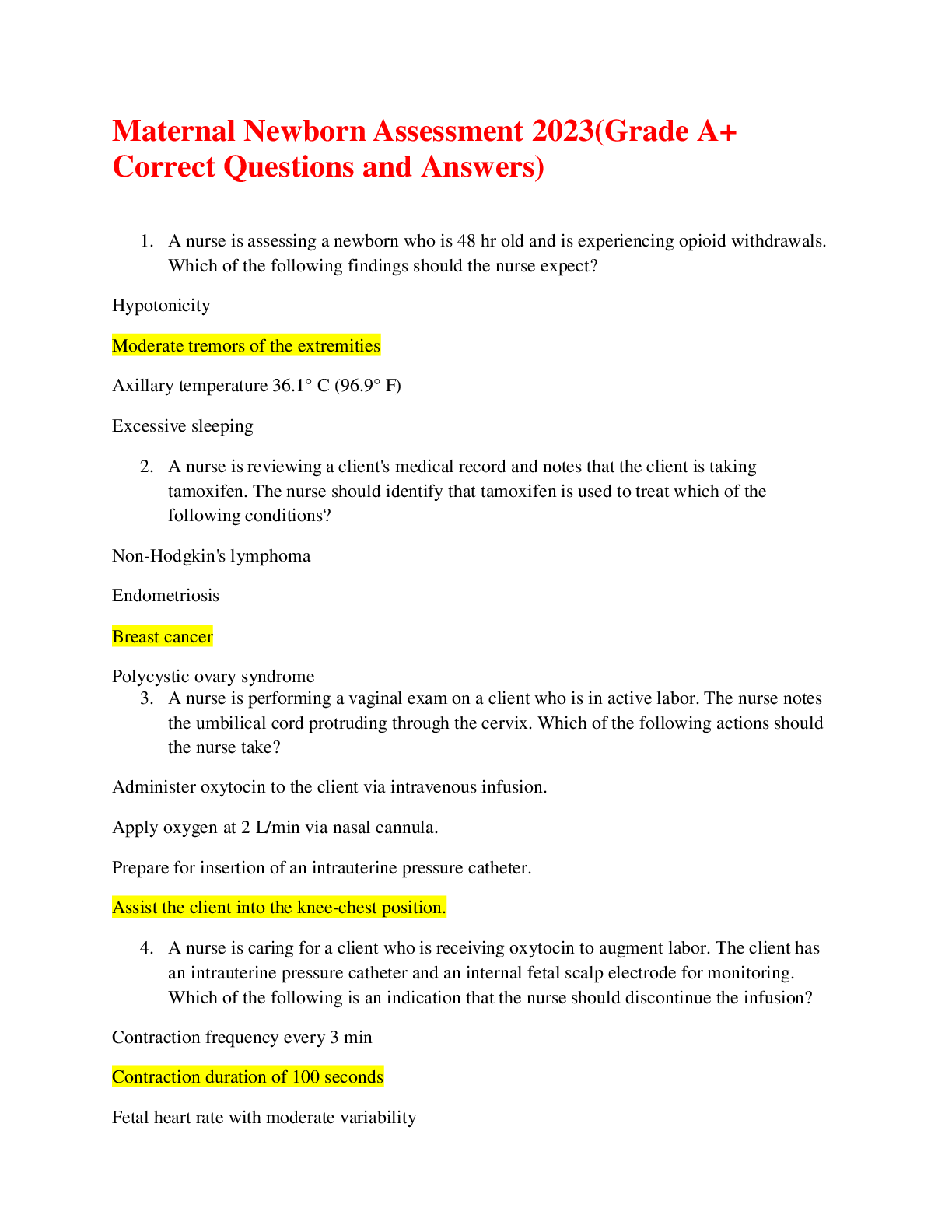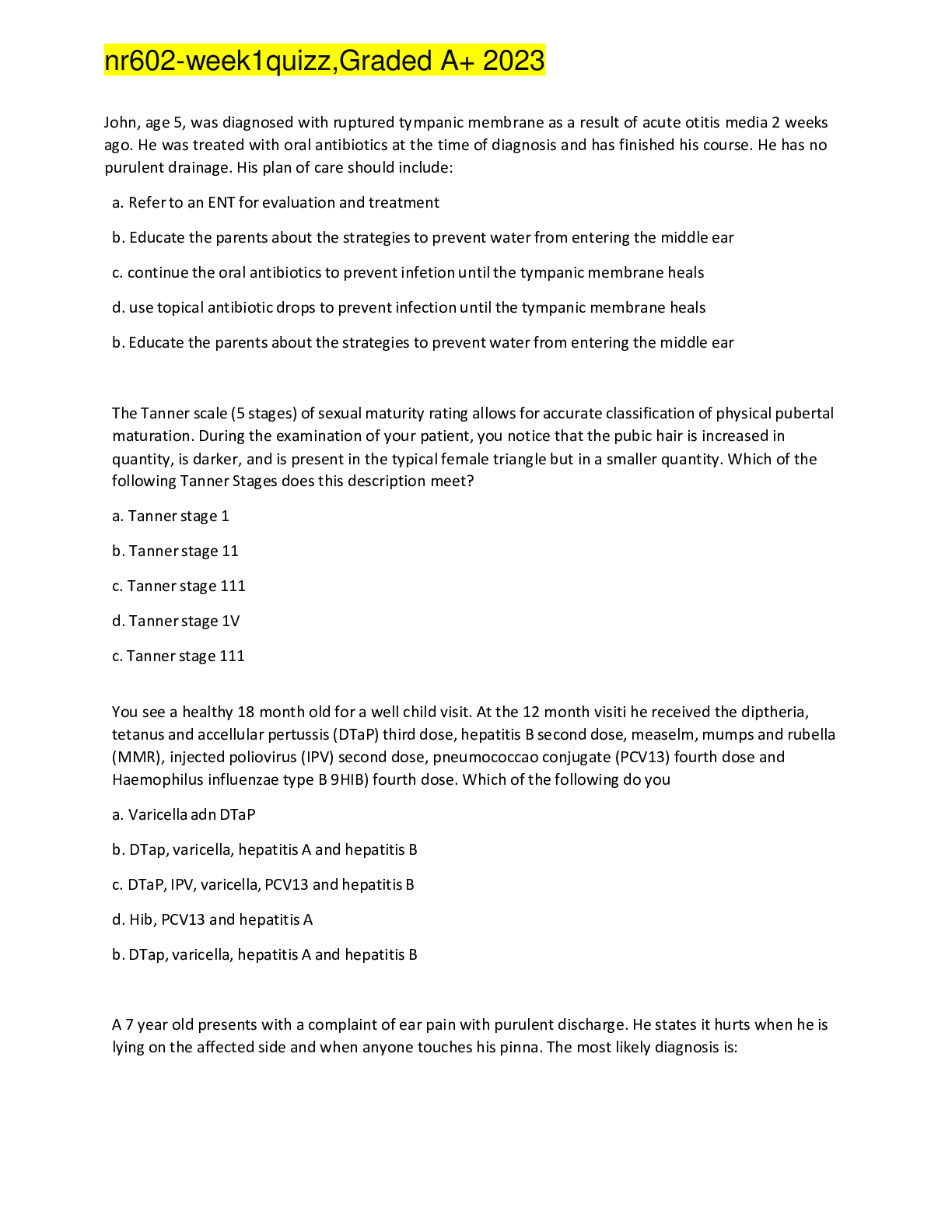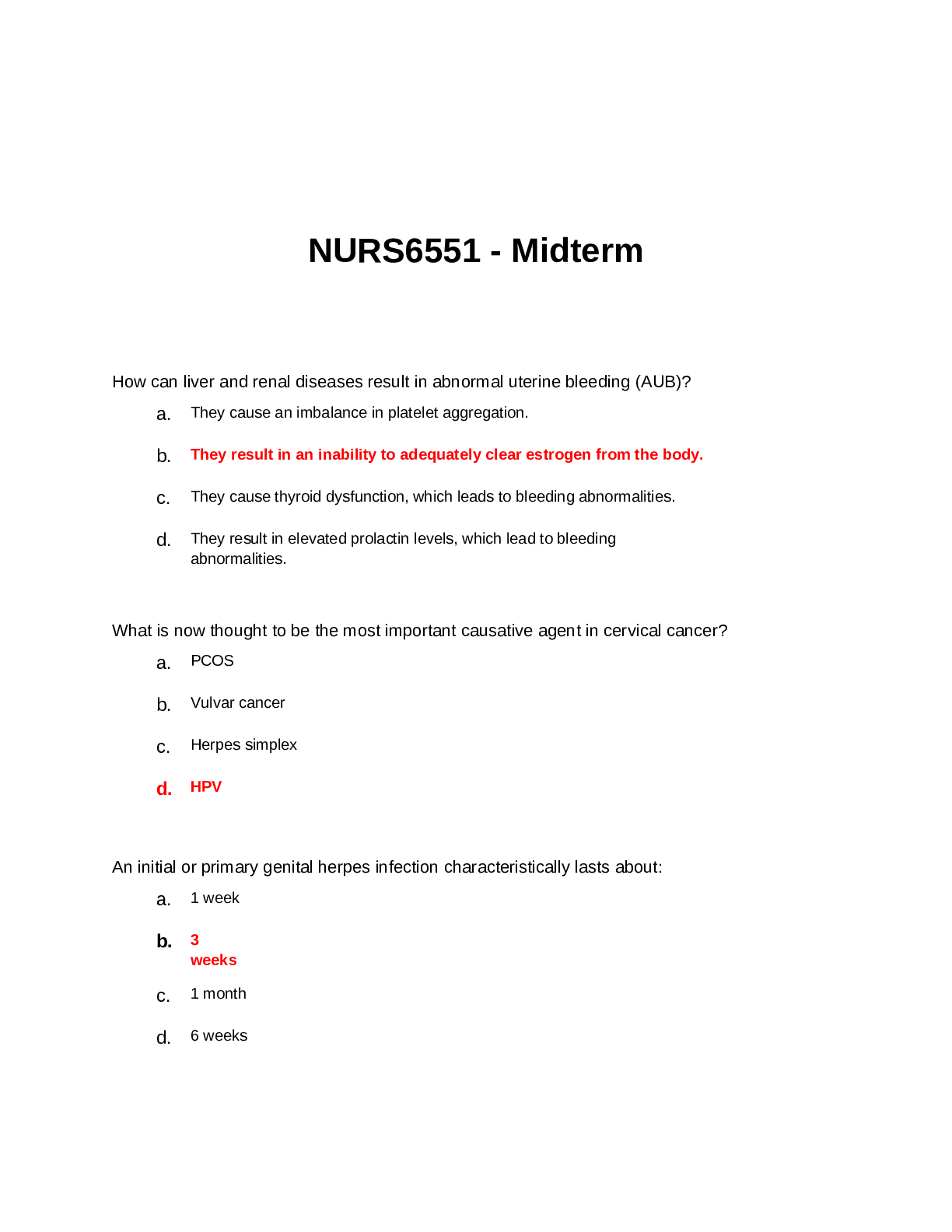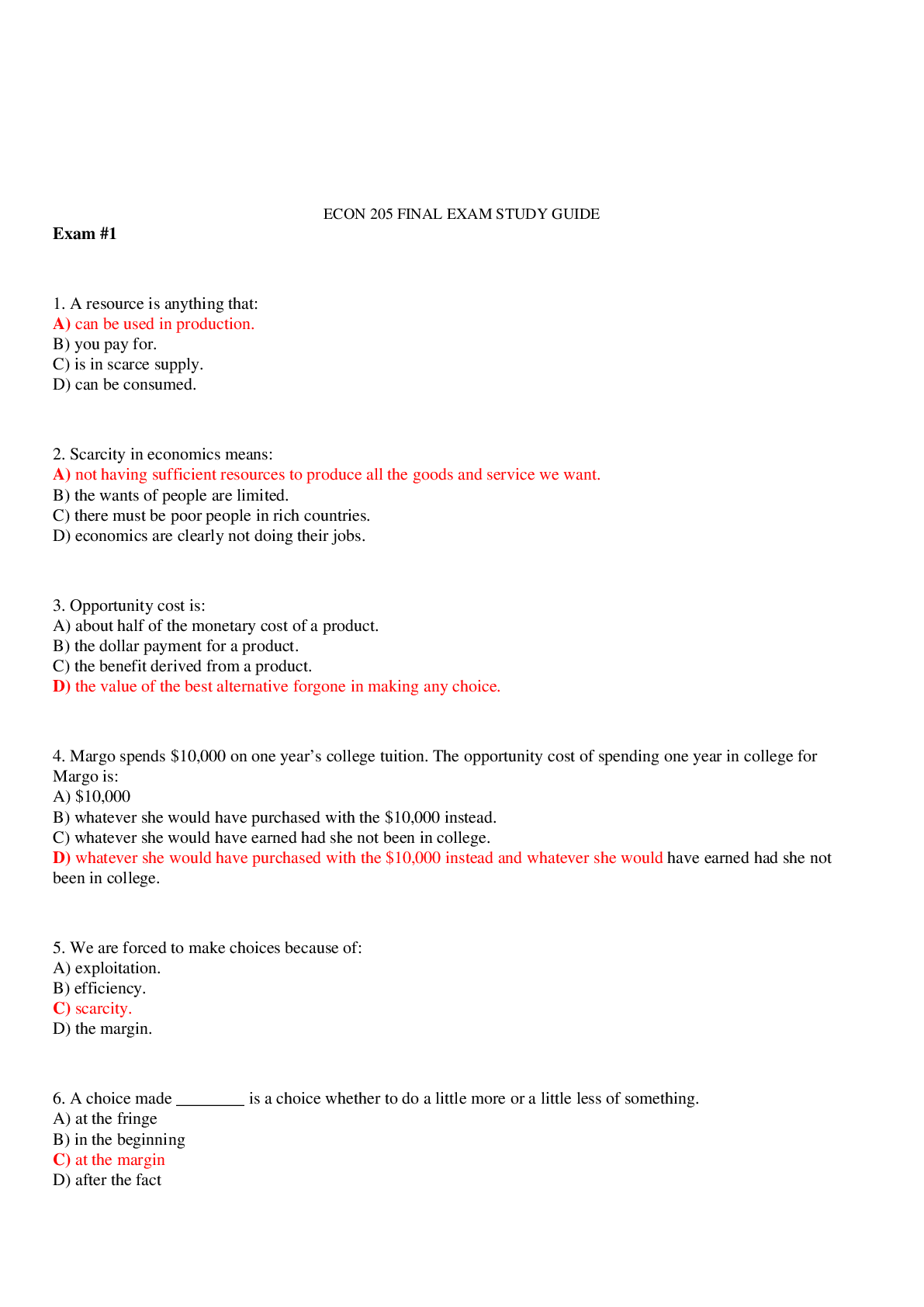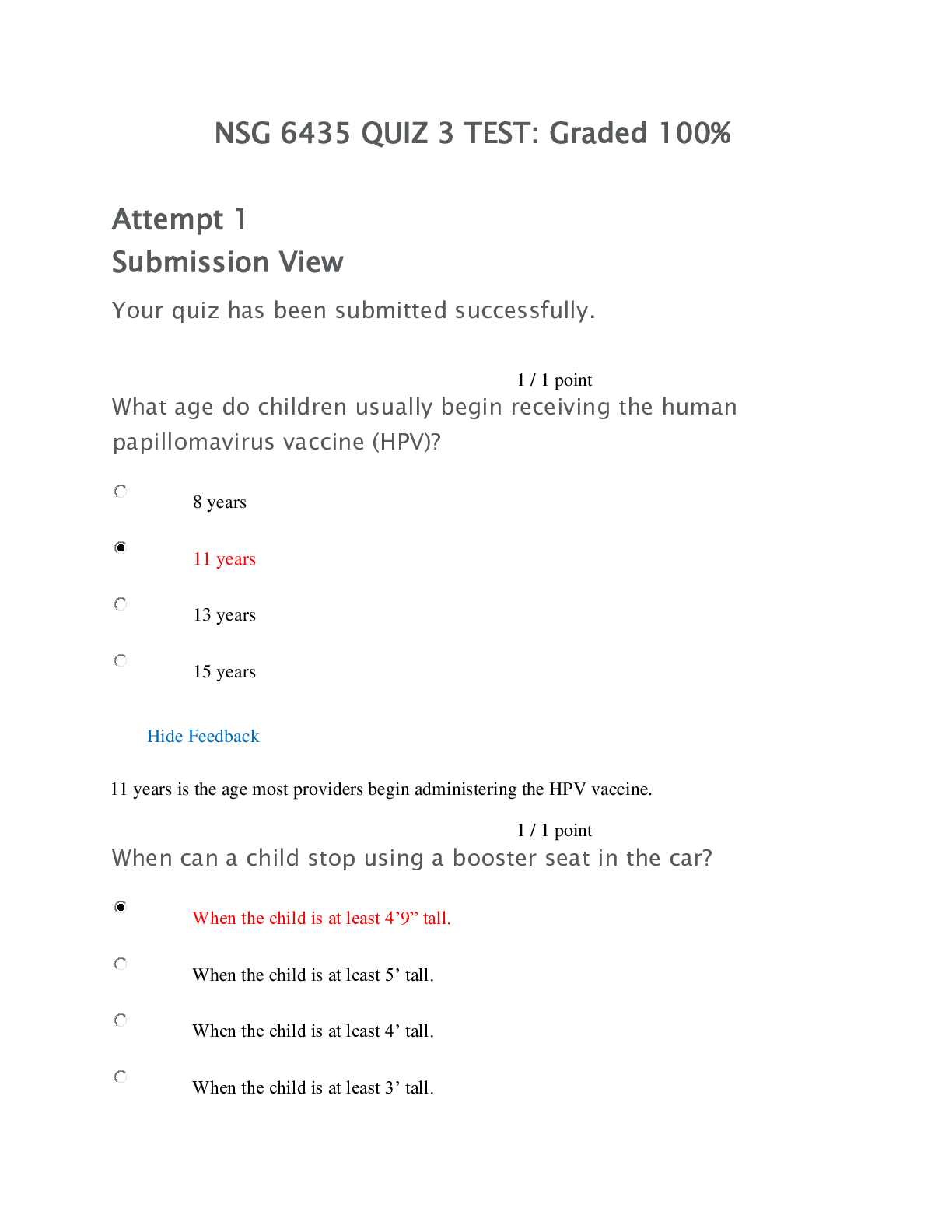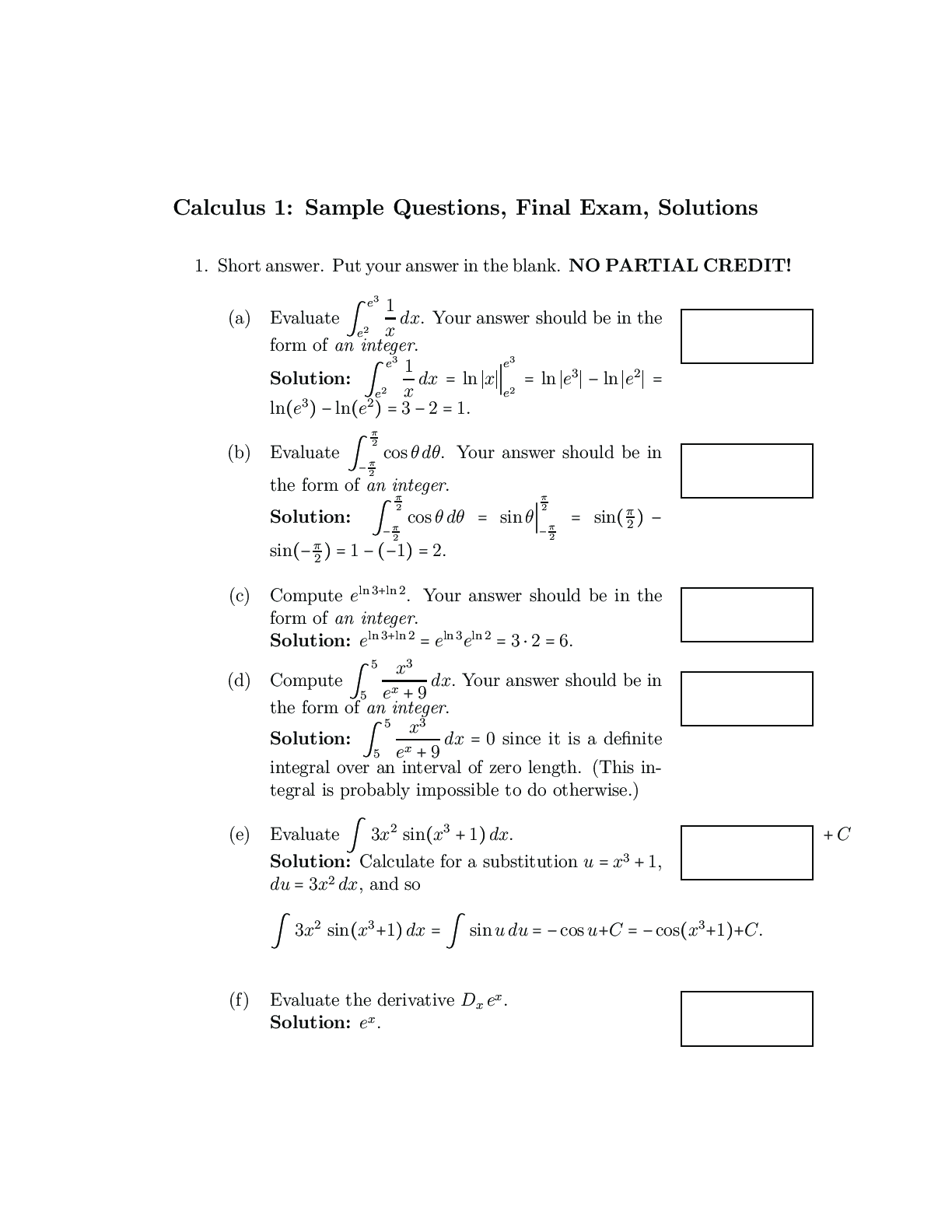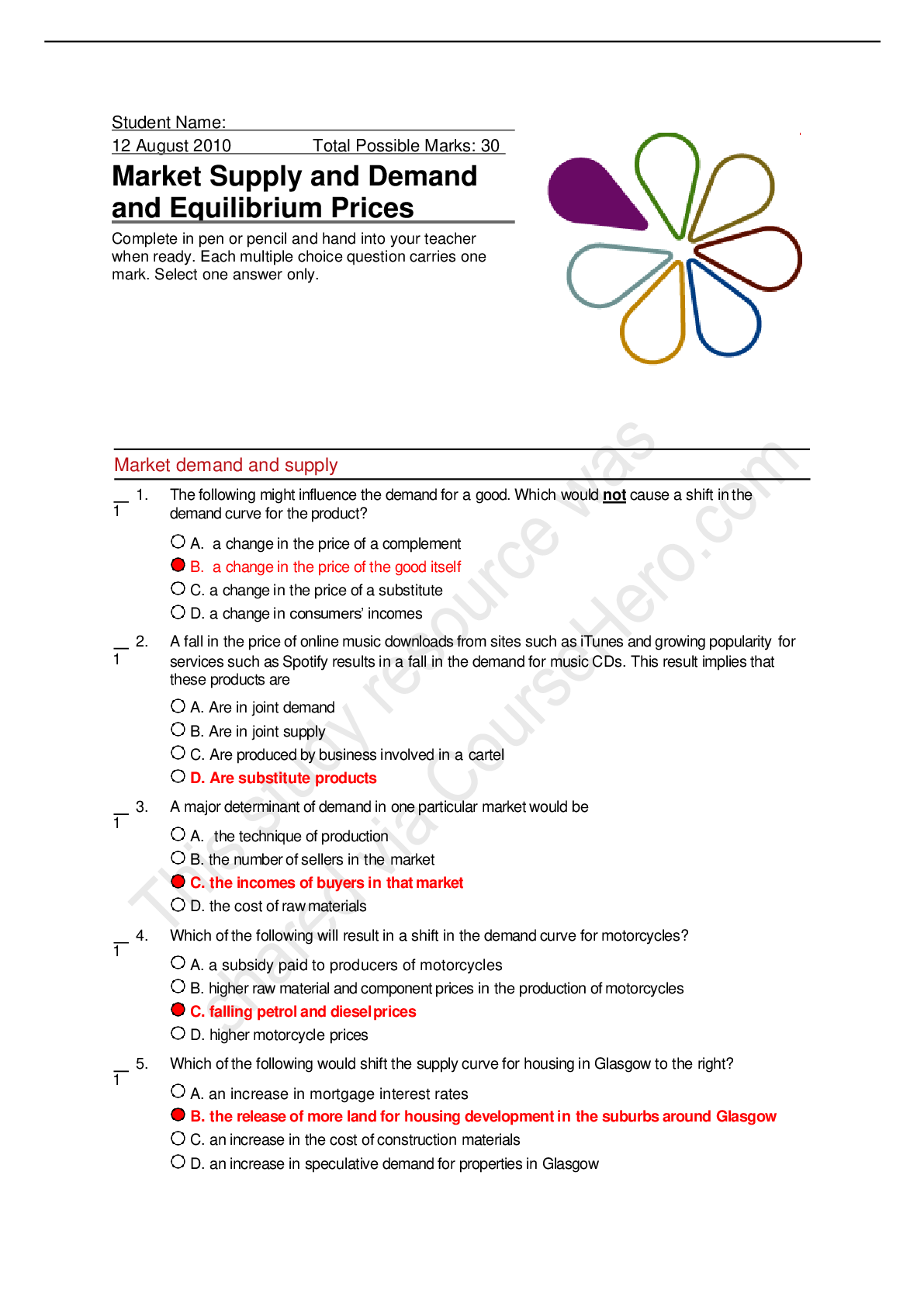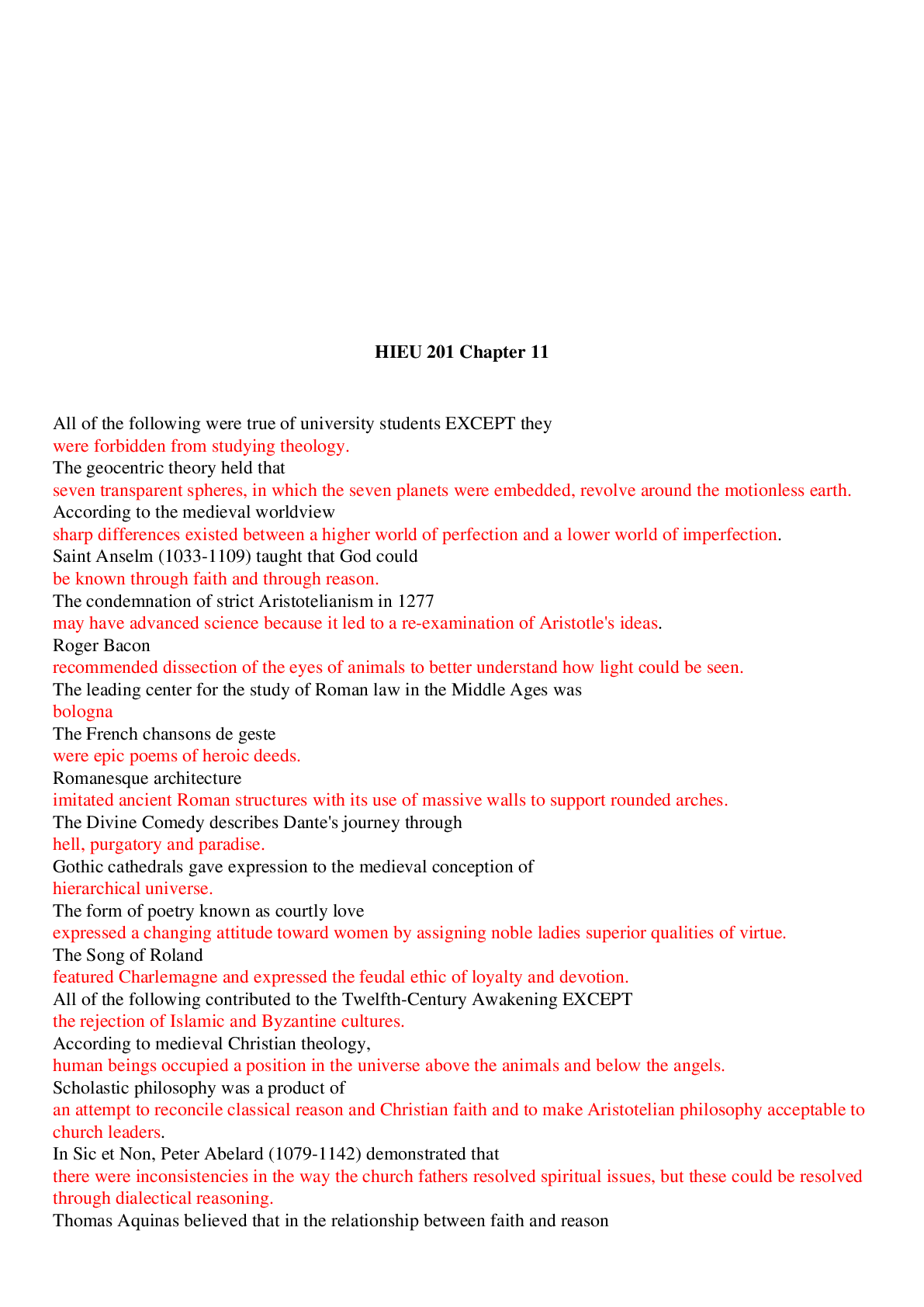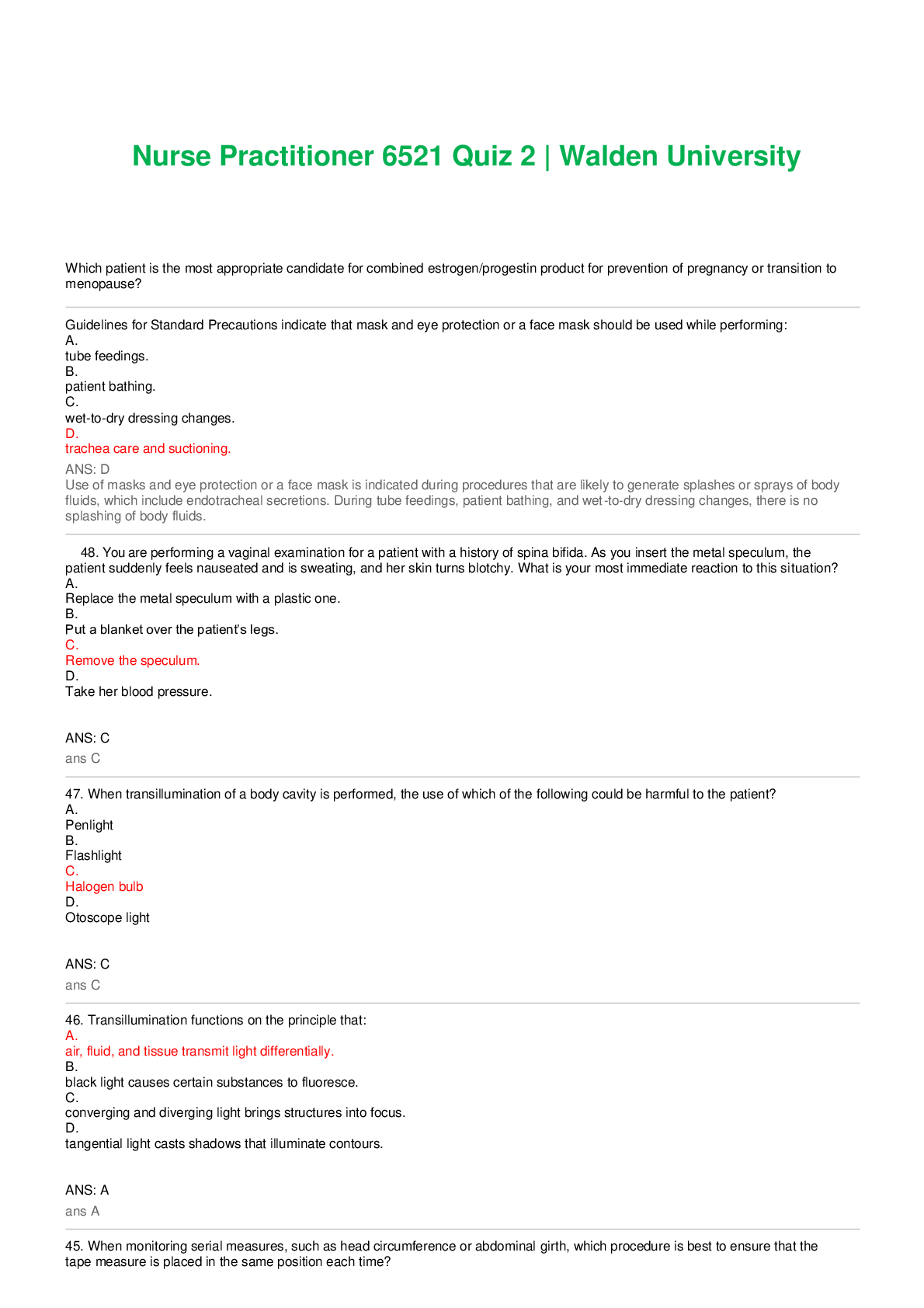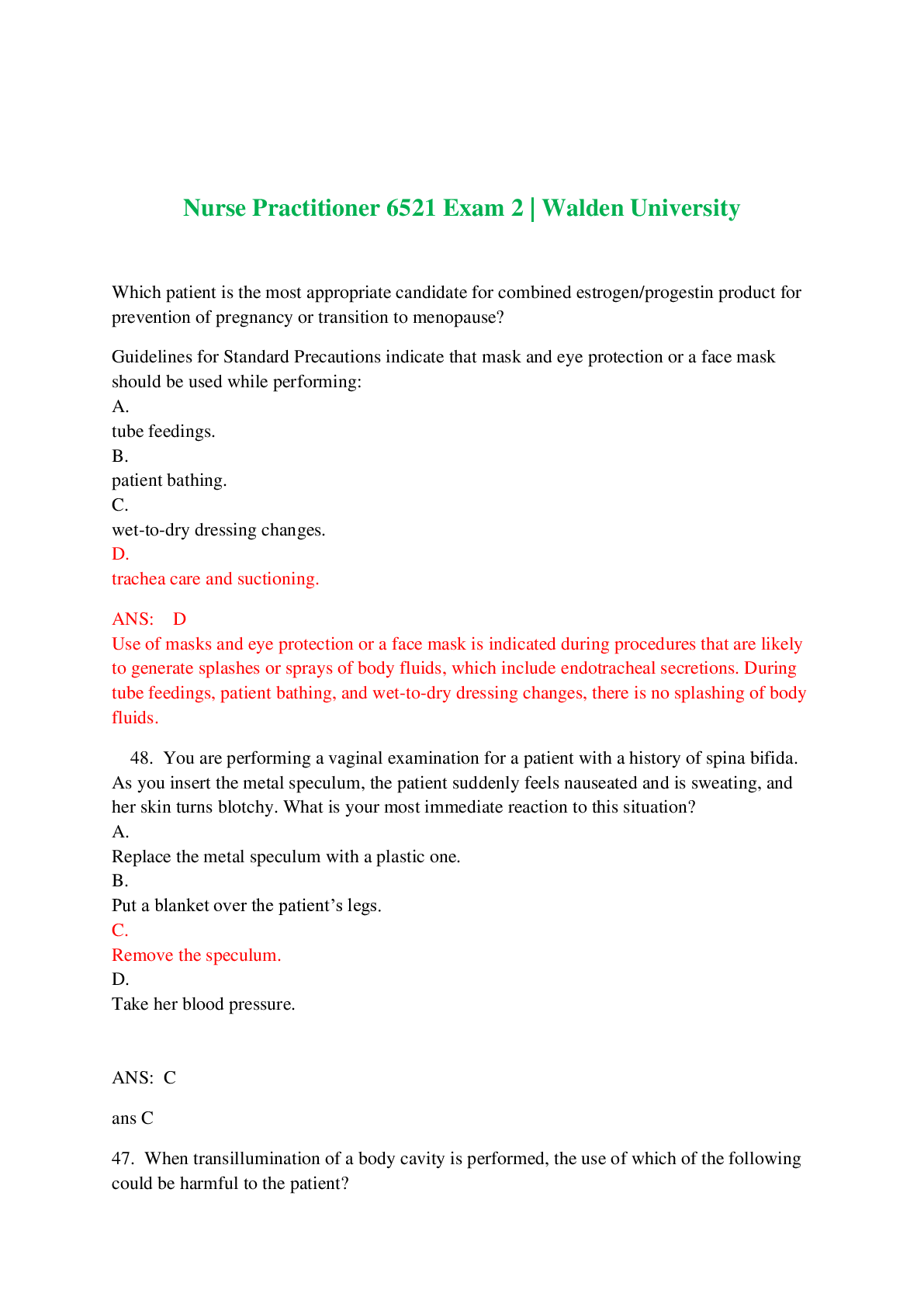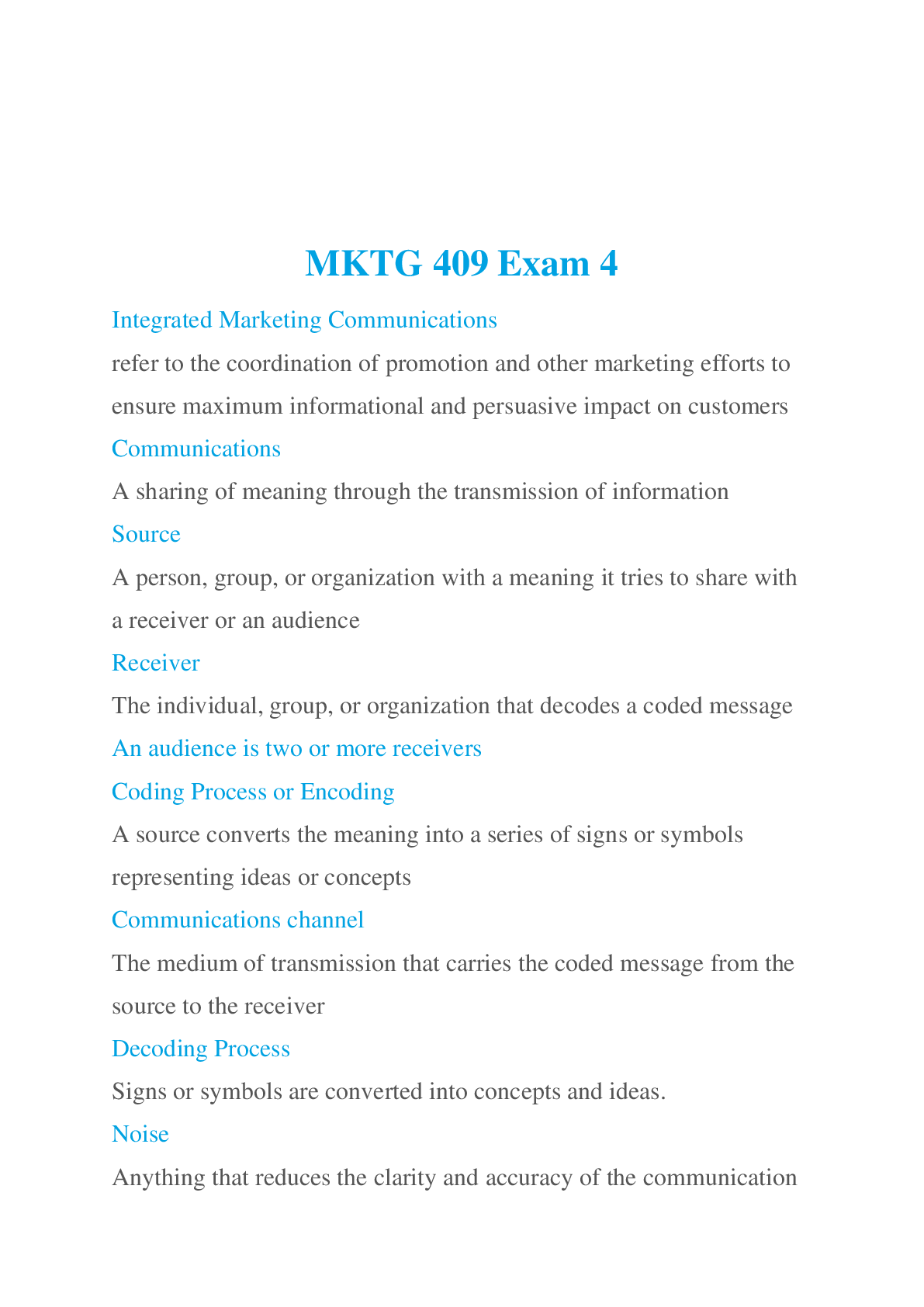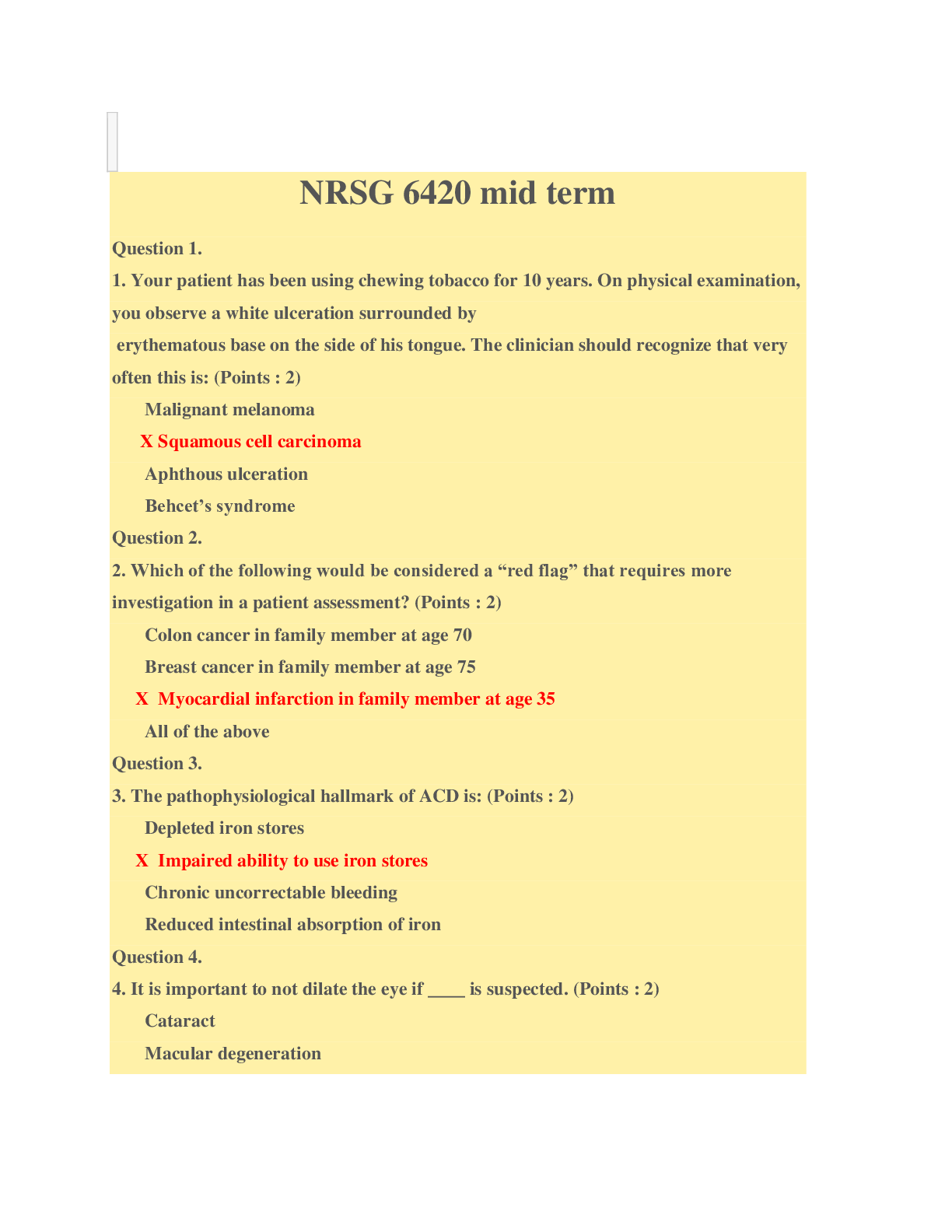NURSING ATI
Document Content and Description Below
Questions: 1. Which nursing actions will the nurse take to assess for possible malnutrition in an older adult patient (select all that apply)? a) Assess for depression. b) Review laboratory res... ults. c) Determine food preferences. d) Inspect teeth and oral mucosa. e) Ask about transportation needs. ANS: A, B, D, E The laboratory results, especially albumin and cholesterol levels, may indicate chronic poor protein intake or high-fat or high-cholesterol intake. Transportation affects the patient’s ability to shop for groceries. Depression may lead to decreased appetite. Oral sores or teeth in poor condition may decrease the ability to chew and swallow. Food likes and dislikes are not necessarily associated with malnutrition. 2.A nurse is working at a health fair screening people for liver cancer. Which population group should the nurse monitor most closely for liver cancer? a. Hispanic b. Asian Americans c. Non-Hispanic Caucasians d. Non-Hispanic African-Americans ANS: B While Asian Americans generally have lower cancer rates than the non- Hispanic Caucasian population, they also have the highest incidence rates of liver cancer for both sexes compared with Hispanic, non-Hispanic Caucasians, or non-Hispanic African-Americans. 1 3.A nurse is caring for an immigrant with low income. Which information should the nurse consider when planning care for this patient? e. There is a decreased frequency of morbidity. f. There is an increased incidence of disease. g. There is an increased level of health. h. There is a decreased mortality rate. ANS: B Populations with health disparities (immigrant with low income) have a significantly increased incidence of disease or increased morbidity and mortality when compared with the general population. Although Americans’ health overall has improved during the past few decades, the health of members of marginalized groups has actually declined. 4A nurse is assessing the health care disparities among population groups. Which area is the nurse monitoring? .Accessibility of health care services i. Outcomes of health conditions j. Prevalence of complications k. Incidence of diseases ANS: A While health disparities are the differences among populations in the incidence, prevalence, and outcomes of health conditions, diseases and related complications, health care disparities are differences among populations in the availability, accessibility, and quality of health care services (e.g. screening, diagnostic, treatment, management, and rehabilitation) aimed at prevention, treatment, and management of diseases and their complications. 5.A nurse is providing care to a patient from a different culture. Which action by the nurse indicates cultural competence? l. Communicates effectively in a multicultural context m. Functions effectively in a multicultural context n. Visits a foreign country o. Speaks a different language [Show More]
Last updated: 2 years ago
Preview 1 out of 4 pages
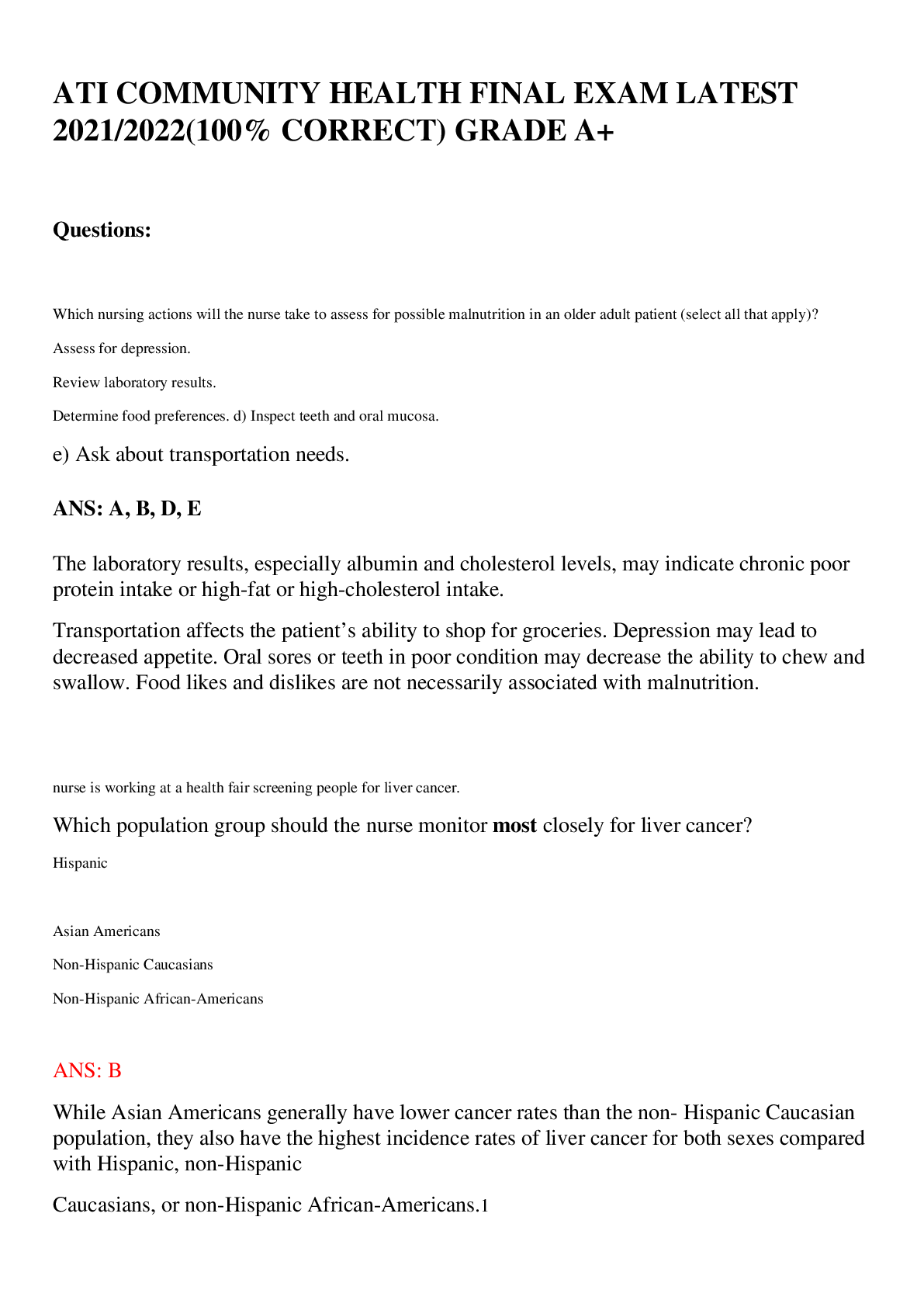
Buy this document to get the full access instantly
Instant Download Access after purchase
Buy NowInstant download
We Accept:

Reviews( 0 )
$4.00
Can't find what you want? Try our AI powered Search
Document information
Connected school, study & course
About the document
Uploaded On
Dec 11, 2022
Number of pages
4
Written in
Additional information
This document has been written for:
Uploaded
Dec 11, 2022
Downloads
0
Views
46






.png)
